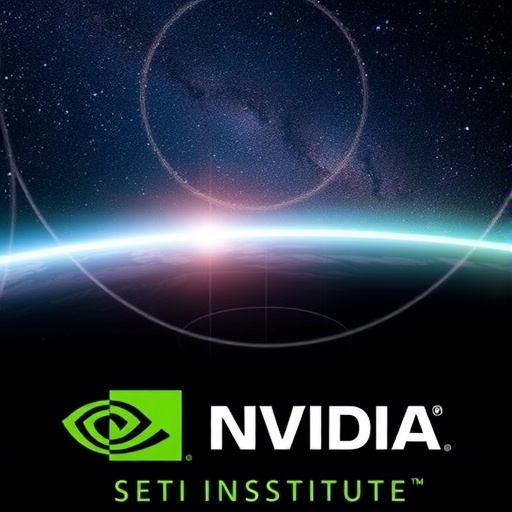The quest for extraterrestrial intelligence has taken an exciting leap forward, as the SETI Institute has officially announced the integration of the NVIDIA IGX Thor platform into their operations at the Allen Telescope Array (ATA). This groundbreaking partnership aims to revolutionize the way scientists detect and interpret radio signals from space. The advancement in technology brings real-time AI capabilities to the forefront of astrophysical research, allowing researchers to explore cosmic phenomena more efficiently and effectively than ever before.
With a field of 42 antennas, the Allen Telescope Array has long been a vital tool in the search for radio signals that may signify cosmic events or even intelligent life beyond Earth. By harnessing the computational power of the NVIDIA IGX Thor platform, scientists at the SETI Institute can now process and analyze signals directly at the source—the telescope itself. The result is a significant reduction in the time required to identify unusual or potentially significant data, which, in turn, accelerates the pace of their research.
The move to incorporate NVIDIA’s advanced technology represents a new era for the SETI Institute. The NVIDIA IGX Thor has been designed specifically for real-world applications, allowing for AI inference and GPU-accelerated signal processing workflows right at the edge of discovery. This advance not only optimizes the efficiency of data collection but also enables the scientific community to scrutinize a larger swath of the sky in real time.
Luigi Cruz, a Staff Engineer at the SETI Institute, explains the importance of this technology, emphasizing how it enhances their capabilities in the search for extraterrestrial signals. The compact and power-efficient design of the IGX Thor makes it an ideal tool for their next-generation signal processing pipeline. By employing this technology, SETI Institute researchers are poised to tackle more complex data and refine their search strategies in ways that were previously unimaginable.
Bringing real-time AI processing to the ATA is not merely an improvement; it is a paradigm shift in the field of radio astronomy. The SETI Institute’s experience with previous generations of NVIDIA technology, particularly the IGX Orin platform, laid a robust foundation for this leap. The IGX Orin was pivotal in developing the world’s first real-time AI search for fast radio bursts (FRBs), and the transition to IGX Thor will enhance their analyses, enabling researchers to increase the pace and precision of their investigations.
Dr. Andrew Siemion, the Bernard M. Oliver Chair for SETI at the SETI Institute, shared his enthusiasm for the new platform, stating, “By marrying scientific curiosity with advanced technology, we are not just observing the universe; we are transforming our exploration methodologies.” This newfound efficiency signifies a tremendous progress point for their mission to decode the signals of the cosmos.
Moreover, the broader implications of the NVIDIA IGX Thor’s integration extend beyond radio astronomy. The platform’s versatility positions it as a powerful tool for innovators across various sectors, including industrial safety and healthcare. The same technology that is reshaping advanced manufacturing plants and medical facilities is now being harnessed to push the boundaries of our understanding of the universe. As such, the collaboration between SETI and NVIDIA exemplifies the interconnected nature of technology and scientific discovery.
As the SETI Institute continues its pivotal work in exploring the cosmos, the integration of AI technology represents a critical step forward in their quest to understand the origins and prevalence of life in the universe. By leveraging cutting-edge AI, they are not only improving their own processes but also contributing to a more profound collective knowledge about our place in the cosmos. The possibilities such advancements create are monumental, providing a clearer picture of the universe’s myriad mysteries.
In conclusion, the collaboration between the SETI Institute and NVIDIA epitomizes a fusion of rigorous scientific inquiry and technological innovation. The deployment of the IGX Thor platform marks a turning point in how radio astronomy is approached, facilitating real-time analysis of vast amounts of data while allowing researchers to act swiftly upon their findings. As we stand at the threshold of a new era in astronomical research, one can’t help but wonder what incredible discoveries lie ahead on humanity’s path to uncovering the secrets of the universe.
The SETI Institute was founded in 1984, driven by a commitment to understanding life’s origins and prevalence across the cosmos. The organization has consistently demonstrated proficiency in multiple scientific disciplines, blending insights from the physical and biological sciences with advanced data analytics and machine learning methodologies. Their enduring collaboration with both industry and academia underscores their commitment to fostering innovative research that pushes the boundaries of human knowledge while maintaining close ties with government entities like NASA and the National Science Foundation.
As the search for extraterrestrial life continues to gain momentum, advancements like the NVIDIA IGX Thor platform will undoubtedly play an instrumental role in shaping the future of astrobiology and radio astronomy. The promise of integrating real-time AI into the search for signals from distant galaxies not only underscores the importance of technology in scientific research but also enriches the narrative of humanity’s quest for knowledge beyond our own planet.
Subject of Research: Integration of NVIDIA IGX Thor platform into the SETI Institute’s Allen Telescope Array.
Article Title: SETI Institute Accelerates the Search for Life Beyond Earth with NVIDIA IGX Thor
News Publication Date: October 28, 2025
Web References: NVIDIA Blog on IGX Thor, SETI Institute Projects
References: NA
Image Credits: Credit: SETI Institute
Keywords
Space sciences, Astronomy, Astrophysics, Observational astrophysics, Radio astronomy, Space research.




